#Impresarios Shop
Explore tagged Tumblr posts
Text
🌟🛡️ Adventure awaits in The Elder Scrolls Online! The Legacy of the Bretons Celebration event starts November 21st and runs until December 3rd! Help thwart the Ascendant Order while collecting Glorious Reward Boxes and Event Tickets for unique prizes! Check out our complete guide to ensure you don’t miss a thing this event! 🎉⚔️
#Legacy Of The Bretons#ESO Event#The Elder Scrolls Online#High Isle#Ascendant Order#Bretons Celebration#Glorious Reward Box#Dreadsail Reef#Events In ESO#ESO Dungeons#Crafting Materials#Companion Gear#Furnishing Recipes#Treasure Hunting#Event Tickets#Impresarios Shop#Molag Bal Illusion#Daily Quests#World Bosses#Galen Zone#DLC Content#Gaming Event#Elder Scrolls Community#Loot And Rewards#Fantasy Gaming#Event Tips#Adventure In High Isle#Systres Archipelago#Collectibles In ESO#Memory Lanes In Gaming
1 note
·
View note
Text
Fanfics I Really Liked in May 2024

So. Since I keep a list of what I´ve read anyway (there´s always a list), I will rec all the fics I´ve wholly enjoyed on a monthly basis. Old and new, canon or AU, big or small authors, long or short but nearly always Johnlock (-ish).
+++++
This May has been totally dominated by Calais_Reno's May Prompts 2024 writing frenzy. I've "only" read the ficlets/fics that have been created for this occasion. There are so many great stories!!
Here is the collection Calais_Reno made for this event May 2024 Prompts Take a look, there are so many fics/ficlets in there!
+++++
Sherlockian Limericks of Dubious Memory and There once was a man lived in London... -- The Sherlock Holmes - May Prompts 2024 by Friday411 @friday411
May is for Limericks by helloliriels @helloliriels
Screw Spring, May is for Limericks by GhostOfNuggetsPast @ghostofnuggetspast
Four collections of limerick shenanigans! They come in all tastes but are always delicious.
+++++
Come What May by weeesi @weeesi
A collection of great ficlets for the prompts.
May Prompts 2024 Ficlets by Raina_at @raina-at
Another collection of great ficlets, some take place in one of Raina_at's AUs.
Trifles 3 (May Prompts 2024) by Calais_Reno @calaisreno
The ficlets our impresario of the may prompt event created.
Open Your Eyes by JRow @jrow
John fell and Sherlock's about to fall apart.
Angst, hurt/comfort and a happy ending in this fic that follows the 31 prompts.
May Has 31 Days by SophB_Holmes @bs2sjh
What if one day everything changed?
31 shorts as part of CalaisReno's May Prompt Challenge
The Luckiest Girl in the World by Lock_John_Silver @lisbeth-kk
Awesome idea to write one ficlet for every year in Rosie Watson's life, thus following her from baby to adult. So many lovely moments!
You're Not Designed to be Alone by thalialunacy
A journey from friends to more, told in bite-sized pieces.
Very tasty bites they are.
2024 May Prompts from @Calais_Reno by thegildedbee @thegildedbee
John had eventually figured out, post-Reichenbach, that Sherlock was alive and working on getting rid of Moriarty's network, and that he had strong-armed Mycroft into facilitating his being able to also go out on the road and help protect Sherlock on his missions.
This became an impromptu fic following the prompts!
What Hands Hath Wrought by emilycare @keirgreeneyes
With Ghast pilot John Watson by his side, can Holmes overcome a new threat offered by eccentric genius, Professor Moriarty?
This has become to be known as the Kaiju AU and boy to they wreak havoc on poor old London!
+++++
*self plug 🙂* I wrote two fics for the may prompts
The Perfect Place aka The Bed Shop Boys AU and White Pony Tattoo a tattoo shop AU. Both with happy Johnlock endings.
60 notes
·
View notes
Text





October 1st 1999 saw the sad death of Lena Zavaroni.
Lena was a Scottish child singer and a television show host. With her album Ma! He’s Making Eyes at Me at ten years of age, she is the youngest person in history to have an album in the top ten of the UK Albums Chart. Later in life she hosted TV shows and appeared on stage. She died at the age of 35 after a long battle with anorexia nervosa.
Born Lena Hilda Zavaroni November 4th 1963...( there is where it hits me, how young she was when she passed away, less than two years younger than myself, seeing it written is such a reminder of our own mortality)... in Greenock and grew up in the small town of Rothesay on the Isle of Bute with musical parents, who owned a fish and chip shop. Father Victor Zavaroni played the guitar, mother Hilda sang, and Lena herself sang from the age of two. Her Grandfather, Alfredo had emigrated from Italy.
She was discovered in the summer of 1973 by record producer Tommy Scott, who was on holiday in Rothesay and heard her singing with her father and uncle in a band. Scott contacted impresario Phil Solomon, which led to his partner Dorothy Solomon’s becoming Zavaroni’s manager.
In 1974 Lena appeared on Opportunity Knocks hosted by Hughie Green and won the show for a record-breaking five weeks running. She followed this with the album Ma, a collection of classic and then-recent pop standards which reached number eight in the UK album chart. At 10 years, 146 days old, Zavaroni is still the youngest person to have an album in the Top 10 and was also the youngest person to appear on the BBC’s Top of the Pops.
Zavaroni also sang at a Hollywood charity show with Frank Sinatra and Lucille Ball in 1974, at which Ball commented, “You’re special. Very special and very, very good,” although some sources attribute the words to Sinatra. Following this, Zavaroni guest-starred on The Carol Burnett Show. She also appeared in The Morecambe and Wise Show, the 1976 Royal Variety Show and performed at the White House for US President Gerald Ford. Signed to the soul-oriented Stax Records label in the United States, Zavaroni did not make much of a chart impact Stateside despite the praise and television appearances, as her Ma album failed to chart and its title single made it only to number 91 on the Billboard Hot 100 during a four-week chart run in the summer of 1974.
While attending London’s Italia Conti Academy stage school, Lena met and became long-term friends with child star Bonnie Langford. The two starred in the TV special Lena and Bonnie.
Between 1979 and 1982, Lena had her own TV series on the BBC, Lena Zavaroni and Music, which featured singing and dancing, and included guests such as Spike Milligan, Elaine Stritch, and Les Dawson.
From the age of 13, Zavaroni suffered from anorexia nervosa. While at stage school, her weight dropped to 56 lb (4 stone or 25 kg). Zavaroni blamed this on the pressure placed upon her to fit into costumes while at the same time she was “developing as a woman.
She continued to suffer from anorexia throughout the 1980s, and in 1989 she married computer consultant Peter Wiltshire. The couple settled in north London but separated 18 months later. Also in 1989, Zavaroni’s mother, Hilda, died of a tranquilliser overdose and a fire destroyed all of her showbiz mementos.
After the breakup of her marriage, Zavaroni moved to Hoddesdon, Hertfordshire, to be nearer to her father and his second wife. By this time, she was living on state benefits and in 1999 was accused of stealing a 50p packet of jelly, although the charges were later dropped.
Zavaroni underwent a number of drug treatments and received electroconvulsive therapy in an attempt to beat her anorexia. Her inquest was told that none of these had been successful in the long term. In addition she was suffering from depression and begged doctors to operate on her to relieve her depression. Although the operation would not cure her anorexia, she was desperate for it to proceed and threatened suicide (she also took a drug overdose) if it did not.
In September 1999 Zavaroni was admitted to University Hospital of Wales in Cardiff for a psychosurgical operation. After the operation, she appeared to be in a satisfactory condition and after a week she was “making telephone calls, cheerful and engaging in conversation,” even asking her doctor if he thought there was any chance that she would get back on stage. However, three weeks after the operation, she developed a chest infection and died from pneumonia on 1st October 1999.
11 notes
·
View notes
Video
Grand Splendid Via Flickr: Our next stop on day 4 was a visit to BA's amazing bookstore, El Ateneo Grand Splendid. Here is 2 of 6 bookstore photos. Buenos Aires is among the cities with the highest number of bookstores per person in the world, with more than 700 brick-and-mortar establishments. This historic, palatial theater is now one of the world’s finest bookstores. In 2019, it was named the "world's most beautiful bookstore" by National Geographic. Situated on Santa Fe Avenue in Recoleta, the building was designed by architects Peró and Torres Armengol for impresario Max Glücksmann (1875-1946), and opened as a theatre called Teatro Gran Splendid in May 1919. In 1929, the theater underwent its first transformation to become a cinema, with the distinction of being the first in Buenos Aires to show sound film. February 2000 the ornate former theatre was leased by Grupo Ilhsa, renovated and converted into a book and music shop. Chairs are provided throughout the building, including the still-intact theatre loges, where customers can dip into books before purchase. There is a café in what was once the stage. The ceiling, the ornate carvings, the crimson stage curtains, the auditorium lighting and many architectural details remain. Despite the changes, the building still retains the feeling of the grand theatre it once was. With each incarnation since its inception in 1919—first as a performing arts theatre, then as a cinema, and now a bookstore—The Grand Splendid has proven itself befitting of its majestic title. Architect Fernando Manzone oversaw the building’s most recent conversion into the El Ateneo bookstore and music shop. . Permission to use Photo: . 21 December, 2021. . Hello Ted, I’m working on an article for a magazine and I wanted to inquire about using some of your photos of El Ateneo Grand Splendid I found on Flickr. The magazine is an arts journal and is a non-profit organization. All credit for the photos will be given to you. I’d like to use the close up of the balcony, the overall shot of the bookstore that is focused on the stage-turned-café, and the shot of the bookstore’s different levels that looks to be taken from the second level. Please let me know what you think as soon as possible. Thank you, Madison Arsenault House of Cadmus
#2020#Argentina#Buenos Aires#Cropped#NIKON#NIKON D750#NIKON FX#Ted McGrath#Ted's photos#Vignetting#El Ateneo Grand Splendid#BA El Ateneo Grand Splendid#El Ateneo Grand Splendid BA#Buenos Aires El Ateneo Grand Splendid#El Ateneo Grand Splendid Buenos Aires#BA#Bookstore#BA Bookstore#Buenos Aires Bookstore#Books#Bookshelves#El Ateneo#BA El Ateneo#El Ateneo BA#Buenos Aires El Ateneo#El Ateneo Buenos Aires#Torres Armengol#Peró and Torres Armengol#Max Glücksmann#BA Max Glücksmann
3 notes
·
View notes
Text
Riverdale Characters: Townsfolk

Terry “Pop” Tate - owner of the chock’lit shoppe
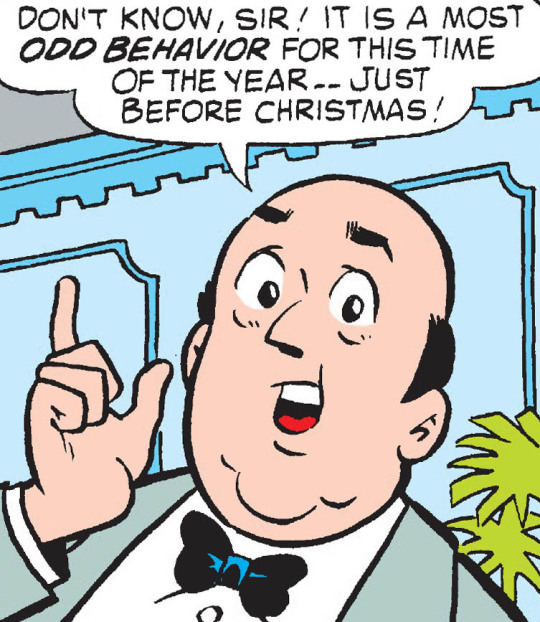
Hubert Smithers - butler of the Lodge family
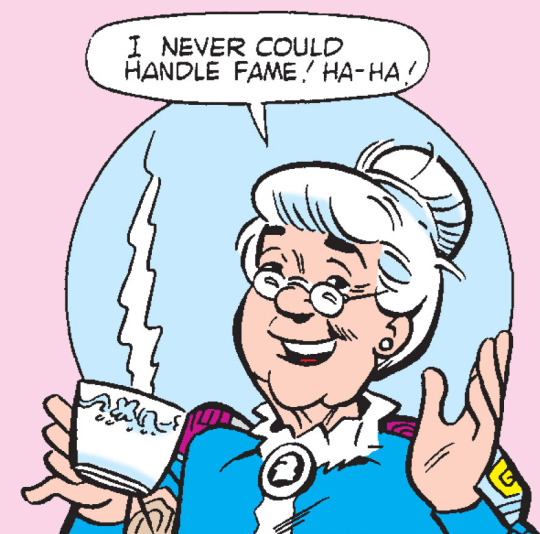
Lydia Wyndham - author of Blooming Blossoms; Betty’s neighbor

Pierre Gaston - chef of the Lodge family
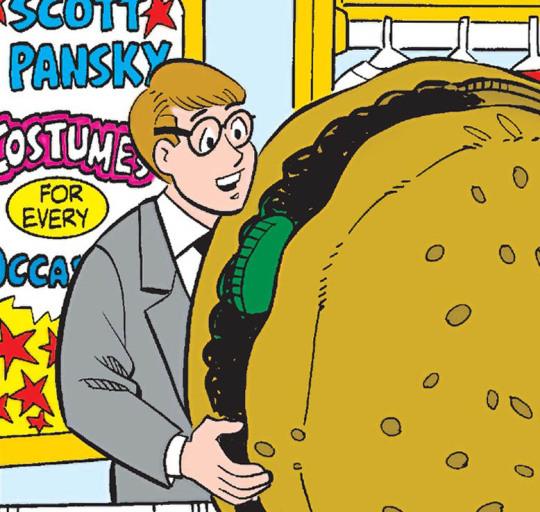
Scott Pansky - owner of the costume shop

Dr. Sara Bellum - psychiatrist of Jughead

Chef Segarini - owner of Segarini’s Pizzeria; Pop Tate’s rival

Cromwell - the Lodge family chauffeur

Mindy Munowitz - Jughead’s crush who works as a dental assistant

Dexter Howard - WPBJ TV cameraman who dated Betty

Steve Moleback - Betty’s crush who works at a father’s plant nursery

DeDe Cruz - temporary PEP Comics employee who likes Jughead

Unca Paulo - owner of a pizzeria; Archie’s boss

Mayor Fodsnik - mayor of Riverdale
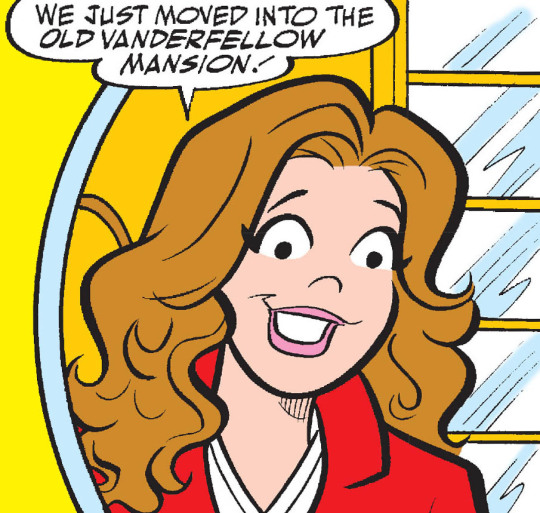
Barbara Bentley - new neighbor of Veronica
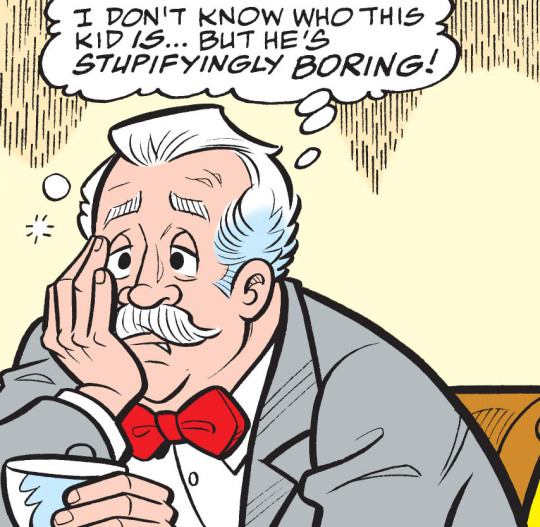
Eaton Grubb - famous food critic who loves Pop Tate’s burgers

Al the Caterer - owner of Al’s Catering; Jughead and Archie’s boss
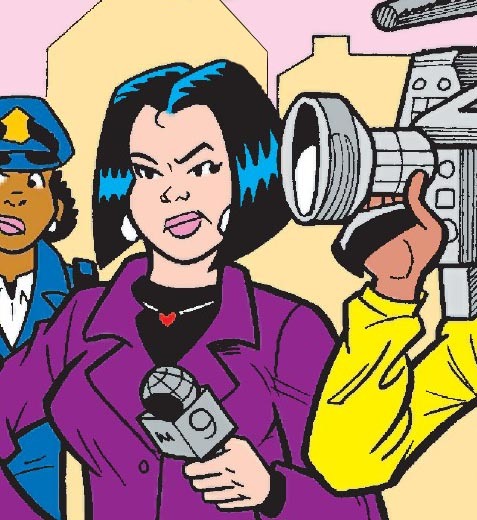
Brenda Lin - reporter at WRIV TV
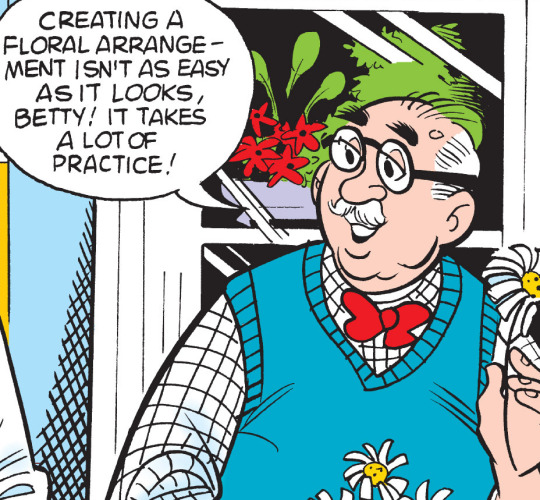
Mr. Elm - owner of the flower shop

Mr. Davis - manager of the Tea Room; Betty’s boss
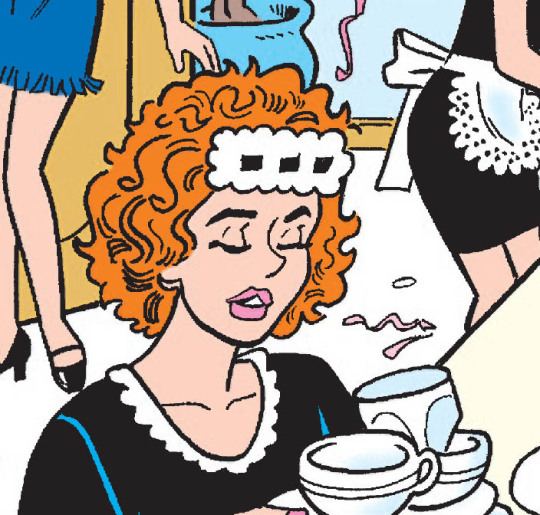
Fifi - personal maid of Veronica Lodge

Mr. Spif - trainer of aspiring models
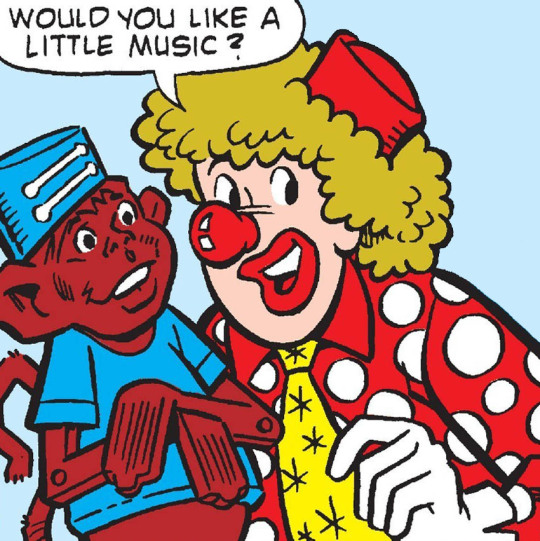
Dr. Jester - pediatric dentist who likes to dress up as a clown

Ms. Molar - receptionist at Dr. Acherman’s dental clinic

Mr. Plyer - contractor who usually works for the Lodge Family

Mr. Milkweed - steadiest customer of Pop’s chock’lit shoppe
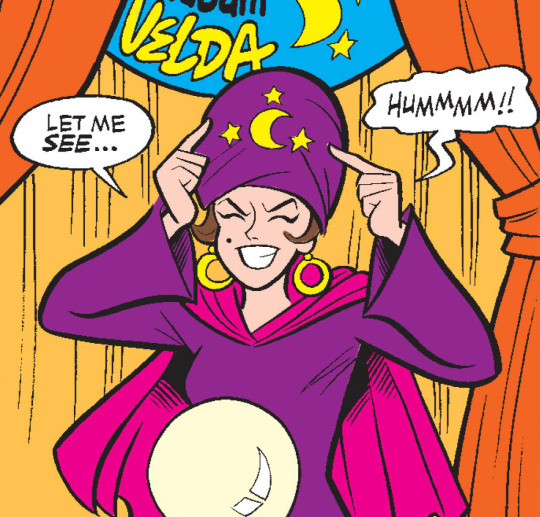
Madam Velda - the self-proclaimed best psychic in town

Godfrey Ghecko - real estate impresario who hates history

H.M. Bugg - business tycoon who hates Christmas

Miss Brissy - expert in compulsive shopping therapy

Tony Weatherbee - owner of Weatherbee’s Wheels; Waldo’s brother
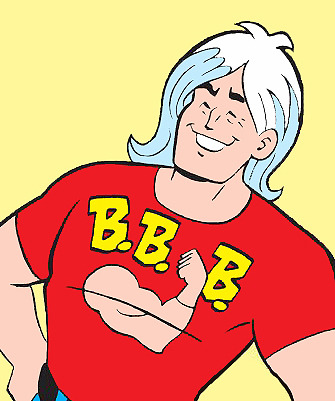
Bruno Beazley - owner of Beazley’s Better Bodies; Bernice’s husband

Seta Upenbeg - dog whisperer who tries to “train” Hot Dog

Mozart Myers - rhythm doctor hired to teach The Archies about harmony

Mr. Moleback - owner of the plant nursery; Steve’s father

Mrs. Turner - mother of the Turner twins; Betty’s babysitting client

The Riverdale Chief of Police with his twin boys

Mr. and Mrs. Johnson with their daughter Emily - Betty’s clients
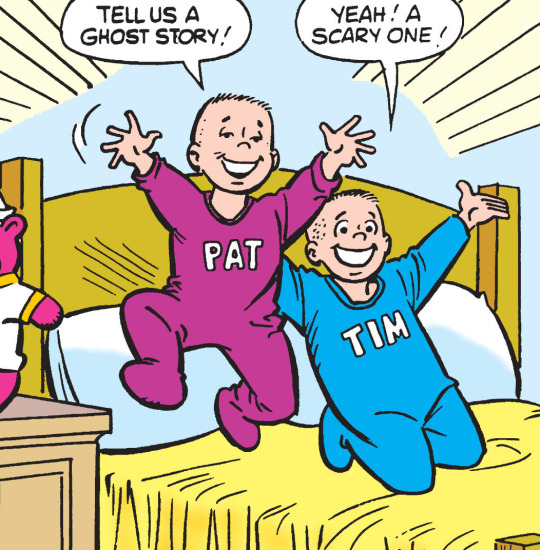
Pat and Tim Kennedy - Betty’s regular babysitting clients

Eddie and Freddie Turner - Betty’s regular babysitting clients
10 notes
·
View notes
Photo
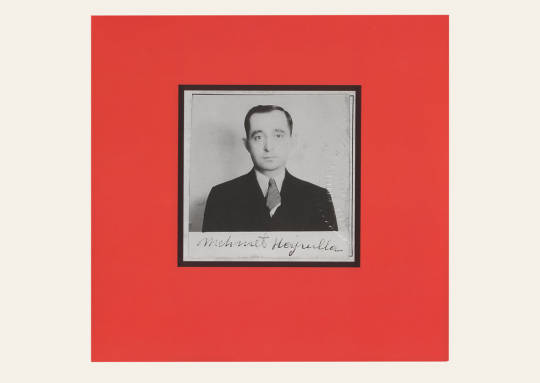
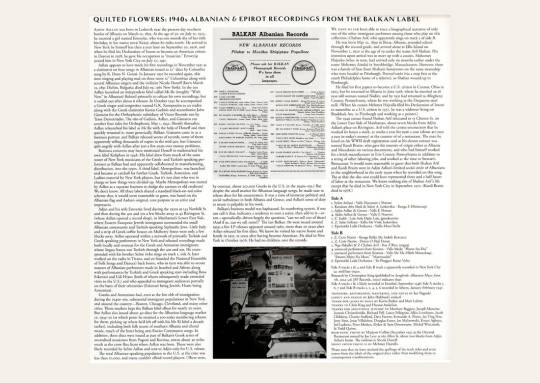
Quilted Flowers: 1940s Albanian & Epirot Recordings from the Balkan Label LP Limited Edition
Ajdin Asllan was born in Leskovik near the present-day southern border of Albania on March 12, 1895. At the age of 30, on July 12, 1925, he married a girl named Emverije, who was one month shy of her 16th birthday, in her native town Korçë, about 80 miles north. He arrived in New York by himself less than a year later on September 20, 1926, and when he filed his Declaration of Intent to become an American citizen in 1928 as a resident of Detroit, he gave his occupation as "musician." Emverije joined him in New York City on July 27, 1931. Asllan appears to have made his first recordings in November 1931 as a clarinetist on four songs issued as 12” discs by Columbia sung in Albanian by K. Duro N. Gerati. In January 1932 he recorded again, this time singing and playing oud on three Columbia 12”s along with several Albanian singers and the violinist Nicola Doneff (born March 21, 1891 Dichin, Bulgaria; died July 19, 1961 New York). In 30s Asllan launched an independent label called Mi-Re (roughly “With New” in Albanian) Rekord primarily to release his own recordings, but it stalled out after about 6 releases. In October 1941 he accompanied a Greek singer and songwriter named G.K. Xenopoulos as an oudist along with the beloved Greek clarinetist Kostas Gadinis and accordionist John Gianaros for the Orthophonic subsidiary of Victor Records run by Tetos Demetriades. The trio of Gadinis, Asllan, and Gianaros cut another four sides for Orthophonic May 1, 1942. Shortly thereafter, Asllan relaunched his label as Me Re with the help of Doneff and then quickly renamed it, more generically, Balkan. Gianaros came in as a business partner, and Balkan released scores of records, some of them seemingly selling thousands of copies in the mid-40s, but Gianaros split angrily with Asllan after just a few years over money problems. By 1947, Doneff had trademarked the Kaliphon label, which drew from much of the same roster of New York musicians of the Greek- and Turkish-speaking performers as Balkan and apparently collaborated in distribution, marketing, and manufacturing into the 1950s, but some business distinction had been drawn. A third label, Metropolitan, was launched and became at catchall for further Greek, Turkish, Armenian, and Ladino material by New York players, but it's not clear who was in charge or how things were divided up. Maybe Metropolitan was started by Asllan as a separate business to dodge the taxman or old creditors? We don’t know. All three labels shared a standard black-on-red color scheme that, it would seem reasonable to guess, was based on the Albanian flag and Asslan’s original, core purpose as an artist and impresario. Adjin and Emverije lived during the 1930s into the 50s first at 143 Norfolk St. and then at 42 Rivington St. (where Asllan opened a record shop), in Manhattan's Lower East Side, where Eastern European Jewish immigrants surrounded the small Albanian community and Turkish-speaking Sephardic Jews, and abutting Little Italy and a strip of Greek coffee houses on Mulberry Street. He worked within a network of primarily Turkish- and Greek-speaking performers in New York and released recordings prolifically made both locally and overseas through the 40s and 50s. He corresponded with his brother Selim (who sings on track 1, side A, later worked on the radio in Tirana and co-founded the National Ensemble of Folk Songs and Dances) back home, who was able to secure masters of Albanian performers recorded in Istanbul and Athens along with performances by Turkish- and Greek-speaking stars including Rosa Eskenazi and Udi Hrant (both of whom subsequently made extended visits to the U.S.) Greeks and Armenians had, even at the low ebb of immigration during the 1940s-50s, substantial immigrant populations in New York and around the country - Boston, Chicago, Cleveland, and many other cities. Those markets kept the Balkan label afloat for nearly 20 years. But Asllan also issued about 40 discs for the Albanian-language market ca. 1945-50 (at which point he retained a 500-series numbering scheme for them, picking up where he’d left off with his Me Ri label a decade earlier), including both folk music of southern Albania and choral music, much of the latter anti-Fascist Communist songs. In addition, three discs were issued as part of Balkan’s Greek series of uncredited musicians from Pogoni and Konitsa, towns about 30 miles south as the crow flies from where Asllan was born. The total Albanian-speaking population in the U.S. at the time was less than 10,000, and many couldn’t afford record players. But despite the small market for Albanian-language songs, he made sure to release discs for his countrymen. It was a time of immense political and social turbulence in both Albania and Greece, and the sense of duty to music is palpable in his work. Balkan’s business model was haphazard. Its numbering system, if one can call it that, indicates a tendency to start a series, then add to it - or not - sporadically, driven largely the question, “can we sell 500 of these? (And if so, can we sell 1000?)” The last Balkan 78s were issued around 1959; a few LP releases appeared around 1960, more than 20 years after Asllan released his first discs. We know he visited his native home and family in 1951, 25 years after having become American. He died in New York in October 1976. He had no children, save the records. ========= We have so far been able to trace a biographical narrative of only one of the other immigrant performer among those who play on this collection, Chaban Arif, who apparently sings on track 9. He was born May 22, 1899 in Berat, Albania, attended school through the second grade, and arrived alone at Ellis Island on November 2, 1920 at the age of 19 under the name Aril Shaban. His intention upon arrival was to meet up with a cousin, Mahomet Hajrules (who, in turn, had arrived only six months earlier under the name Mehemet Airula) in Southbridge, Massachusetts. However, there was a family of four from Shaban’s hometown on the same steamship who were headed to Pittsburgh, Pennsylvania (via a stop first at the south Philadelphia home of a relative), so Shaban wound up in Pittsburgh. He filed his first papers to become a U.S. citizen in Canton, Ohio in 1925, but he had returned to Albania in June of 1928, where he married an 18 year old woman named Nadire, and by 1931 had returned to Allegheny County, Pennsylvania, where he was working at the Duquesne, Pennsylvania Carnegie steel mill. (When his cousin Mehmet Hajrulla filed his Declaration of Intent to naturalize as a U.S. citizen in 1937, he was a widower living on Braddock Ave. in Pittsburgh and working as a painter.) The 1940 census found Shaban Arif relocated to 55 Clinton St. on the Lower East Side of Manhattan, about seven blocks from Adjin Asllan’s place on Rivington. Arif told the census enumerator that he worked 60 hours a week, 52 weeks a year for $916 a year (about $17,000 a year in today’s money) at the counter of of a restaurant. The man he listed on his WWII draft registration card as his closest contact was named Kardi Braim, who gave his country of origin either as Albania and Macedonia on different documents, had himself worked for a brick manufacturer in Erie County, Pennsylvania in addition to a string of other laboring jobs and worked at the time at Stewart’s Restaurant. It would seem reasonable to guess that both Shaban Arif and Kardi Braim were in Adjin Asllan’s limited social circle of Albanians in the neighborhood in the early 1940s when he recorded on this song. The $1 that the disc cost could have represented three and a half hours of labor at the restaurant. We know nothing else of Shaban Arif’s life except that he died in New York City in September, 1971. (Kardi Braim died in 1978.)
7 notes
·
View notes
Text
In January 1973, Marvin received an invitation from Stephen Hill, a Jamaican impresario who was setting up a benefit for the Boys Club of Trench Town, Kingston's poorest slum. Marvin didn't commit right away, because he had a hard time when flying was involved. It wasn't until Hill mentioned that Bob Marley was also performing that Marvin agreed to go. He felt linked to Bob Marley through his music, which was used to bring political change and inspire his people.
Even though Jamaica was going through severe economic problems at the time, the island had long been a haven for the privileged, namely the European elite. Marvin was shown the polo clubs, shops, restaurants, tearooms, plantations, and stately homes once occupied by Noel Coward, Ian Fleming, and Errol Flynn. He saw the beautiful countryside: dense, green forests; limestone rock formations; ancient caves that contained underground rivers; and secluded beaches that pirates once used as hideaway. He raved about the jerk chicken and Blue Mountain coffee, the island's famous 'black gold.' Then he was taken through the poor sections of the island, including Trench Town. 'I'm glad I'm here,' Marvin said by phone, 'and I sure hope I can do something to help the poor kids I've seen. There are more churches here than any other place in the world, but the schools are so far apart that many kids don't go - or can't go. It's sad to see these children just hanging out, wasting their days doing nothing.'
The concert was held at Kingston's Carib Theater, and all the proceeds went to the children's charity. Following the show, Jamaican Prime Minister Michael Manley presented Marvin with a key to the city and dedicated a section of private beach to him, a strip of land that would forever be Marvin's alone. Reports that Marvin bought the property and planned to build a home there are not true. Marvin's three-day visit to Jamaica led to his involvement in a charitable organization called 'Save the Children.'
-Frankie Gay
0 notes
Text
27th September 2024.
𝐋𝐚𝐭𝐞 𝐒𝐞𝐩𝐭𝐞𝐦𝐛𝐞𝐫 𝟏𝟗𝟕𝟒. Lena flew out to Germany to appear on television.
youtube
𝐅𝐫𝐢𝐝𝐚𝐲 𝟐𝟕𝐭𝐡 𝐒𝐞𝐩𝐭𝐞𝐦𝐛𝐞𝐫 𝟏𝟗𝟕𝟒. Lena appeared on German television.
𝐖𝐞𝐝𝐧𝐞𝐬𝐝𝐚𝐲 𝟐𝟕𝐭𝐡 𝐒𝐞𝐩𝐭𝐞𝐦𝐛𝐞𝐫 𝟏𝟗𝟕𝟖. Lena was photographed by David Thorpe of Associated News, she was rehearsing at the London Palladium for her show the following week.
𝐒𝐮𝐧𝐝𝐚𝐲 𝟐𝟕𝐭𝐡 𝐒𝐞𝐩𝐭𝐞𝐦𝐛𝐞𝐫 𝟏𝟗𝟖𝟏. Lena starred in Sunday Night at the Blackpool Opera House. Her fee was £2000.
𝐒𝐮𝐧𝐝𝐚𝐲 𝟐𝟕𝐭𝐡 𝐒𝐞𝐩𝐭𝐞𝐦𝐛𝐞𝐫 𝟏𝟗𝟖𝟏. The Birmingham Weekly Mercury had tomorrow's Des O'Connor Tonight as it's pick of the day, Lena was a guest.
𝐓𝐮𝐞𝐬𝐝𝐚𝐲 𝟐𝟕𝐭𝐡 𝐒𝐞𝐩𝐭𝐞𝐦𝐛𝐞𝐫 𝟏𝟗𝟖𝟑. the Sun ran a story with photographs about Lena’s Lonely Struggle.
𝐓𝐮𝐞𝐬𝐝𝐚𝐲 𝟐𝟕𝐭𝐡 𝐒𝐞𝐩𝐭𝐞𝐦𝐛𝐞𝐫 𝟏𝟗𝟖𝟑. The Daily Mirror published the second part of it's feature about Lena.
𝐒𝐚𝐭𝐮𝐫𝐝𝐚𝐲 𝟐𝟕𝐭𝐡 𝐒𝐞𝐩𝐭𝐞𝐦𝐛𝐞𝐫 𝟏𝟗𝟖𝟔. the weekend newspapers mentioned Lena being a guest on Live From The Piccadilly.
𝐒𝐮𝐧𝐝𝐚𝐲 𝟐𝟕𝐭𝐡 𝐒𝐞𝐩𝐭𝐞𝐦𝐛𝐞𝐫 𝟏𝟗𝟗𝟖. The Birmingham Mercury wrote about Lena.
𝐒𝐚𝐭𝐮𝐫𝐝𝐚𝐲 𝟐𝟕𝐭𝐡 𝐒𝐞𝐩𝐭𝐞𝐦𝐛𝐞𝐫 𝟐𝟎𝟎𝟑. Harold Fielding died, right from the beginning of Lena’s career he had confidence in her ability to fill the Blackpool Opera House, - one of the largest theatres in the country at 3000 seats.
Harold Fielding on Desert Island Discs:
𝐒𝐞𝐩𝐭𝐞𝐦𝐛𝐞𝐫 𝟐𝟎𝟏𝟗. Andy Grudko posted some photographs taken in 1974 of Lena at Mrs Grudko’s second hand clothes shop in Whitton Dene. pictured are; Mrs Grudko, her daughter Carmen, and Lena. Carmen also went to Italia Conti but was a few years above Lena. Lena stayed with the Grudkos while in London until she was fifteen when she was taken away from them because she was losing weight and/or they were moving to south Africa. She then went to live with Zena Arthur.
0 notes
Text
Alberto Giuffrè, Storia incredibile dell'uomo con tre gambe, Minimum Fax editore, 2024
scheda dell’editore: https://www.minimumfax.com/shop/product/storia-incredibile-dell-uomo-con-tre-gambe-2657 Francesco Lentini nasce con tre gambe, quattro piedi, sedici dita e due genitali, in una Sicilia di fine Ottocento dove la sua vita si prospetta misera e inevitabilmente destinata alla vergogna. Finché a nove anni l’incontro con un impresario gli cambia la vita: Francesco diventa Frank e…

View On WordPress
0 notes
Text

January 21 - 23 1966 was The Trips Festival.
The First Rock n Roll Festival!!!
Before Woodstock, before Monterey pop, before Fantasy Fair, was the Trips Festival!!!
After countless Acid Test Parties, Ken Kesey, Stewart Brand, and the rest of the Pranksters organized the Trips Festival in the Longshoreman’s Hall in San Francisco in January 1966 with the support of impresario Bill Graham. Owsley Stanley financed the event, bought the Grateful Dead their first functional amplifier system so that in the future they could appear before a larger audience, and became their sound engineer. Gerd Stern of the Company of Us came from New York and installed his projectors and stroboscopes. The Trips Festival was the biggest psychedelic event, the largest LSD party on the American West Coast.
The posters promised a psychedelic experience without LSD. Nonetheless, as expected, more than enough was available. A shopping bag full of freshly made LSD from Stanley’s trusty lab was passed around. It was a unique meeting of beatniks of the 1950s with hippies of the 1960s, the psychedelic scene of the West Coast and the turned-on technophile multimedia scene of the East Coast. As Jerry Garcia remembered it: “Thousands of people, man, all helplessly stoned, all finding them-selves in a roomful of other thousands of people... It was magic—far out beautiful magic.”
Mystic Chemist 164-165
#PsychedelicSynchronicity #AcidTest
0 notes
Text




On May 25th 1726 the worlds first lending library opened in Edinburgh.
The man behind this was Allan Ramsay, Makar, playwright, publisher, wigmaker and impresario of early Enlightenment.
Ramsay began writing, and by 1718 was a successful enough poet to turn his wig shop on the Royal Mile into a bookshop. Some people have credited Ramsay’s early writing with being a major influence on the careers of Robert Fergusson and Rabbie Burns. was a founding member of the Edinburgh Easy Club. in 1720 he set up as a book seller and his shop morphed into first circulating library
The first of these libraries were called Circulating libraries and offered an alternative to the large number of readers who could not afford the price of new books in the nineteenth century but also desired to quench their desire for new material.
Although mainly a poet and writer Ramsay was a cultural entrepreneur who defended Scottish culture at a critical time, when it was under threat in the years following the Union of 1707. The idea was a success and others shortly followed in Bath and Philadelphia.
Another first for Allan Ramsay was Scotland’s first theatre in 1737, on Carrubers close, near to his shop, this was all to much for the religious zealots who perished the thought of people having fun and it was short lived.
Ramsay’s statue takes pride of place in West princes Street Gardens, the pics of hius house are actually where he grew up, Ramsay himself had a property further up the Royal Mile at Castle Hill, there is also a hotel/restaurant/bar at Carlops named after him.
7 notes
·
View notes
Text
Bourbon Street as a Window into New Orleans’ History

A graduate of New Trier High School in Wilmette, IL, Jack Knudson has a passion for travel and the world view that visiting new locales provides. Among the cities Jack Knudson has visited is New Orleans, which features a fifteen-block stretch of history in the French Quarter known as Bourbon Street.
Surveyed in 1722 on the lower Mississippi River’s banks, Rue Bourbon was initially part of a village-like settlement and featured a low-slung architecture characteristic of the West Indies. One of the few remaining examples from the period of French rule (1718–1762) and Spanish rule (1762–1803) is Lafitte’s Blacksmith Shop, now a tavern. A new form of architecture, combining creole and urban Spanish elements, took root after fires devastated the street in the late 18th century. Old Absinthe House at 240 Bourbon, built in 1806, exemplifies this style.
In 1859, the bustling and diverse street witnessed the landmark opening of the French Opera House, which was accompanied by several neighboring theaters and created a vibrant entertainment district. After the Civil War, the wealthy moved out of an increasingly congested urban core and the street took on new life as a destination for immigrants, with saloons and gambling taking hold. The concert saloon Wenger’s, established in 1868, provided a model for entertainment centered on choreographed dances, such as the can-can, accompanied by piano.
By the 1920s, these rowdy destinations had been largely replaced by exclusive nightclubs that had their roots in the Belle Epoque of Paris and offered patrons homegrown jazz performances. A superlative example of the street’s Jazz Age style, which flouted Prohibition, is Maxime Supper Club, which was operated by impresario Arnaud Cazenave at 300 Bourbon Street.
In the late 1960s the street took on its current tourist-friendly appearance, with “window hawking” bringing food and drinks out onto the street, which was closed off to vehicle traffic, creating a Mardi-Gras like atmosphere year round.
0 notes
Text
You can’t miss it: the terrifying, intensely blue, rearing mustang sculpture with glowing, demonic red eyes situated outside of Denver International Airport. At thirty-two feet and 9,000 pounds, it was the artist’s largest sculpture, and also his last.
In 2006, a part of the sculpture swung loose from a hoist in the artist’s studio, severing an artery in his leg and leading to his tragic death. Commissioned in 1992, before DIA even opened, the sculpture Mesteño/Mustang by Luis Jiménez was finished posthumously by the artist’s family and installed in 2008. Described by one travel writer as “one of the city’s more alarming public artworks,” the mustang is a striking sight, as are all of Jiménez’s wild-eyed sculptures.
Jiménez’s most prominent works may be his large-scale public art commissions, scattered across the country: like his gun-slinging, bucking Vaquero (modeled 1980/cast 1990) situated in front of the Smithsonian American Art Museum in Washington, D.C., or Southwest Pietà (1984) in Albuquerque’s Martineztown neighborhood.
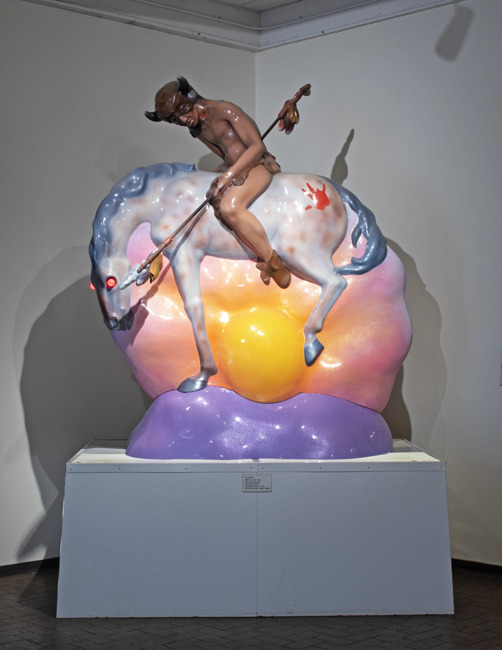
Both the Roswell Museum and the Anderson Museum own monumental sculptures by Jiménez that astound with their dynamism, movement, and energy. With lightbulb eyes and candy-colored automotive paint, the fiberglass sculptures bulge with muscle—like carnival kiddie rides on steroids.
The son of an undocumented Mexican immigrant, Luis Jiménez was born in El Paso in 1940 and spent formative years working in his father’s sign shop, learning to use industrial materials like neon and fiberglass. Immersed in car culture as a teenager, he spray-painted hot rods before receiving his degree in fine arts from the University of Texas at Austin in 1964. Early on, he decided to work with industrial materials, rather than more traditional fine-art media. “I wanted a material that didn’t carry the cultural baggage of marble or bronze,” he told Texas Monthly in 1998. In a video for the Smithsonian, he described his as a “blue-collar process.”
After a short but successful stint in New York in the late 1960s, Jiménez returned to the Southwest, befriending art collector and Roswell art impresario Don Anderson. Jiménez is considered one of the first alumni of the Roswell Artist-in-Residence program (1972-73), and ended up settling in nearby Hondo, New Mexico, founding his art studio in an old schoolhouse.

“To even get to go to a place, like Roswell, where you can see a whole lot of his work at once, is a pretty rare thing to this day,” Christina Rees told me in a recent phone interview. The former Glasstire editor has joined forces with curator and artist Benito Huerta to curate an exhibition of thirty-five works by Jiménez at the Gallery at UTA on the campus of the University of Texas at Arlington. A big-budget showing of his large-scale sculptures, which he is most known for, was out of reach for the UTA show, so they focused on works on paper, maquettes, and smaller sculptures, drawing from collections around the region. These smaller pieces still exude power as standalone works by Jiménez, who was also a master draughtsman and printmaker.
Rees maintains that Jiménez’s distinctive work can be found throughout institutions, museums, and private collections of Texas—once you start looking, you’ll see it everywhere. The Blanton Museum of Art in Austin notably mounted an exhibition of his work last year, drawn primarily from the museum’s own collection. But, as Rees tells students and viewers of the exhibition at UTA, “Take advantage of this opportunity to immerse yourself in this gallery… that this work is all here together at the same time, because that doesn’t happen much.”
Huerta’s history with Jiménez is long and storied. They first met in 1974 in a lithographic studio when Huerta was an undergrad. Jiménez was working on the Progress Suite (the four final concept prints of which are displayed at UTA). Without realizing who he was, Huerta then encountered Jiménez’s work in a solo show at the Contemporary Arts Museum Houston. He remembers, “It blew me away, I’d never seen anything like it.”
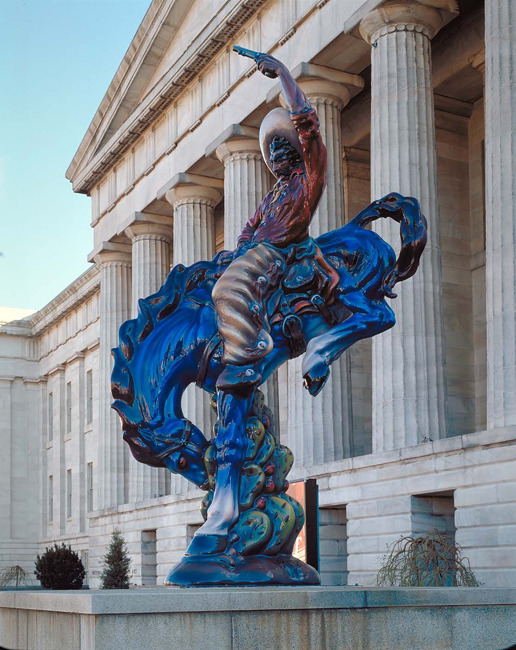
After twenty-five years as the director of the Gallery at UTA, Huerta had recently stepped down and wanted this exhibition to bookend his tenure there. “It’s coming to full circle, so to speak,” he told me.
“I think his work is very passionate,” Huerta says, extolling Jiménez’s depictions of everyday people and Chicano culture. However, Huerta feels that as a result of his premature death and contingencies with the estate, that “Luis’s work, as a result, has not gotten the kind of attention that was beginning to build.”
Rees concurs: “Once he died, it became a lot trickier.”
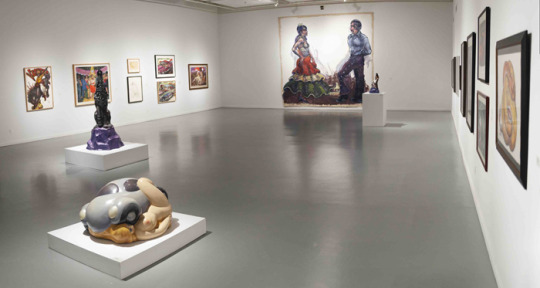
Over the weekend, I participated in the 2023 Texas Sculpture Symposium at Texas Tech University. I related to some of the attendees that I was writing this article and was in turn regaled with memories and stories—some quite fantastic and unbelievable—about Jiménez, his outsized presence, his influence, and his legacy in this region.
“I think the appreciation for him is still wide open and will take hold in a wider way once a [major] museum… is able to do a retrospective… and then everyone would know his name, and they should,” Rees says. “[His work] is exactly right for right now, for a thousand reasons,” she adds, emphatically. “I think he’s one of the most important artists that America has ever churned out, frankly.”
Life and Death: Luis Jiménez continues at the Gallery at UTA, University of Texas at Arlington, through April 1, 2023.
Feature Posted 03/28/2023
0 notes
Text
Availability: In stock (18)
In the decades between its debut performance in Paris in 1909 and the death of impresario Sergei Diaghilev in 1929, the Ballets Russes was an unrivalled sensation not only in France but in London, New York and the other cities it toured. Attention has often been centred on the links between Diaghilev’s troupe and modernist art and music, but there has been surprisingly little written concerning the Ballets’ role in taste-making and trendsetting.
Ballets Russes Style reveals for the first time the full extent of the ensemble’s influence on haute couture. The Ballets Russes’ seasons were an exciting laboratory for ambitious cultural experiments, often grounded in the aesthetic confrontation of those great designers, artists and composers who travelled with the troupe from St Petersburg – Léon Bakst, Alexandre Benois and Igor Stravinsky among them – and Paris’s avant-garde, which included Picasso, Satie, Matisse, Debussy and Ravel. The ensemble brought the stage and everyday life into creative contact with each other, most noticeably in the world of fashion. In its heyday, the Ballets Russes was a potent force in defining Paris Style, bringing the work of great designers such as Jeanne Paquin and Coco Chanel to the stage, and creating sensibilities that resonated in the collections of couturiers from Paul Poiret to Yves Saint Laurent and beyond.
Beautifully illustrated and drawing on unpublished images and memorabilia, this book illuminates the ways in which innovations by the Ballets Russes in dance, music, sets and costume both mirrored and invigorated contemporary culture.
currently on sale at the TMORA shop for $15.95 (down from the $35 it was at)
3 notes
·
View notes
Photo
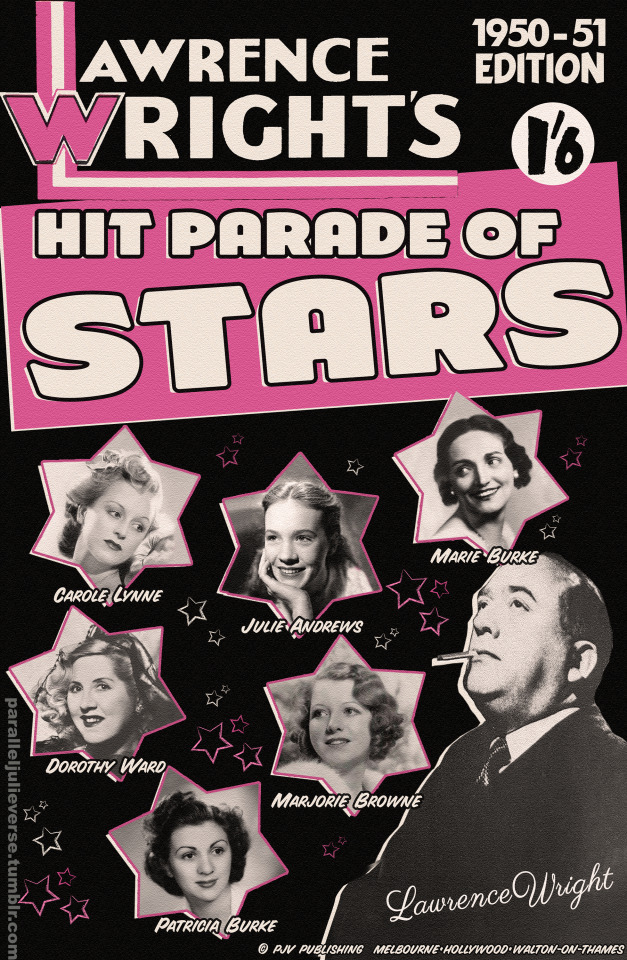
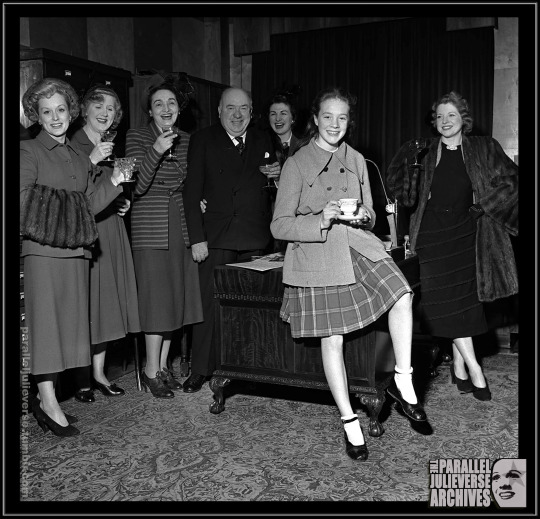
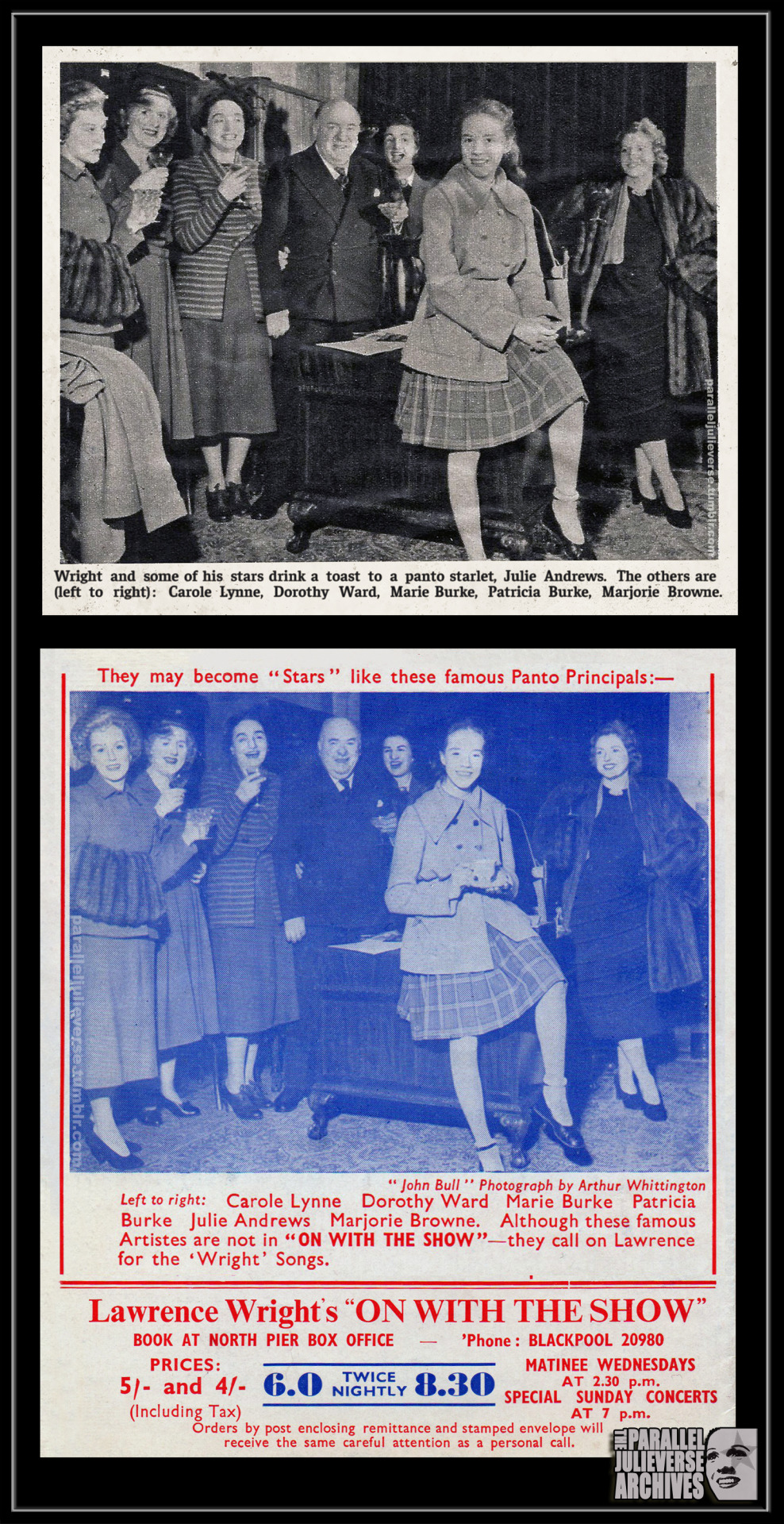
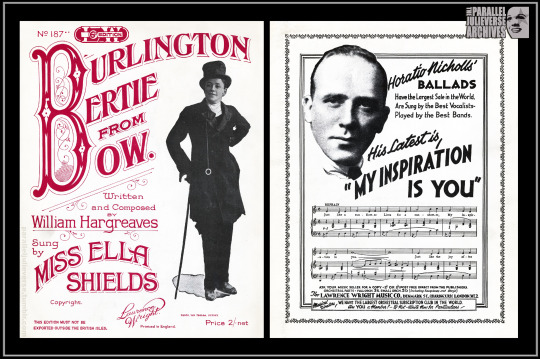
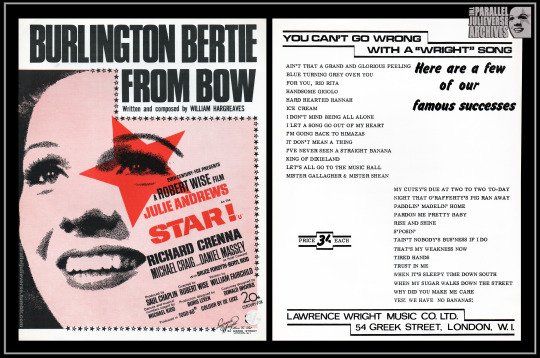
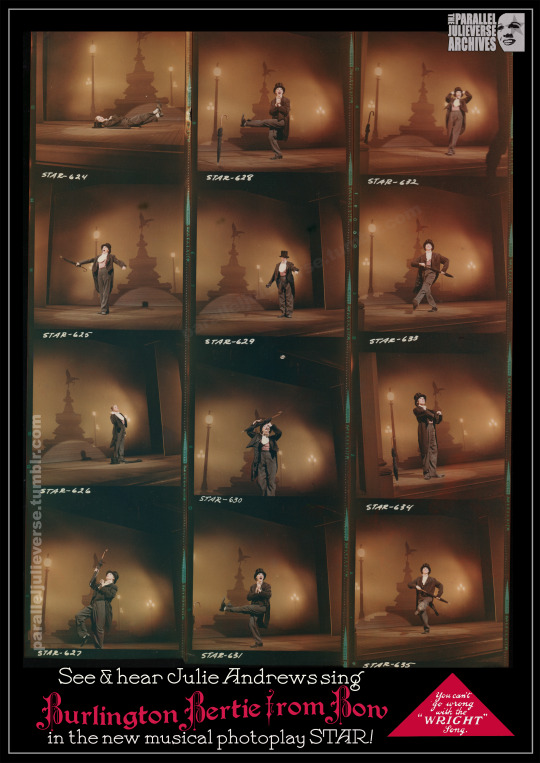
It’s been a while between posts here at the Parallel Julieverse, but we have finally managed to clear a bit of time from work, life, and other such annoyances to get back to what really matters: all things Julie! And in this post we highlight an interesting tidbit of trivia from late-1950 when Julie was appearing in Red Riding Hood at the Theatre Royal Nottingham, the subject of a recent 70th anniversary tribute post.
Although she had only just turned 15 when she was cast as the eponymous lead in Red Riding Hood, Julie Andrews was already an established juvenile star of considerable note. Her debut star-making turn as a 12-year-old child prodigy in Starlight Roof in 1947/48 garnered widespread media attention and it catapulted the young singer into a whirlwind period of touring performances, radio programmes, West End pantomimes, and even early television appearances. Julie’s subsequent casting as the resident singer in the hit BBC radio series, Educating Archie, augmented her fame further, bringing her voice into the sitting rooms of Britain on a weekly basis and making her a household name.
With this growing renown came equally expanded opportunities for cross-promotional marketing such as celebrity endorsements and advertising. A particular variant of celebrity promotion popular in the era was the staged 'star visit’ or what today might be termed ‘celebrity event marketing’ (Segrave 2005). Here the star would be invited to appear at a particular event or special occasion as a way of boosting public and media interest, while serving in return as a form of value-adding PR for the star and his/her professional ventures.
Julie was involved in several such ‘star visits’ during the three month run of Red Riding Hood. During rehearsals in mid-December 1950, she was invited as a VIP guest and honorary judge at the Annual Dance for Booth and Son, a major British apparel manufacturing company (‘Ilkeston’, 1). Around the same time, she paid a special visit to the Nazareth House for Children in Nottingham (‘Night’, 2), as well as the Borough Green Air Training Corps Cadets Open Night where “[p]art of the evening’s entertainment had to be cancelled in order to allow the enthusiastic younger generation to get her autograph” (‘Julie stopped’, 3).
One of the more fascinating such events -- and the one that we profile here -- was a courtesy visit to famed music impresario, Lawrence Wright. Today, Wright is little remembered, save by a handful of theatre history enthusiasts, but he was a major figure in the British entertainment industry of the early twentieth century (Wright 1988). Popularly dubbed the ‘Daddy of Tin Pan Alley’ and the ‘Monarch of Melody’, Wright started as a music composer in his hometown of Leicester where, under the pseudonym of Horatio Nicholls, he penned a string of popular songs such as “Down by the Stream", “Blue Eyes”, “Toy Drum Major”, and “Among My Souvenirs” (‘Alley’s Daddy’, 3).
Wright’s greatest success, however, came as a sheet music publisher and entertainment entrepreneur. In 1910, he chanced upon a catchy tune written by a local Leicester street singer called “Don’t Go Down the Mine, Daddy”. He promptly purchased the rights to the song and published it as part of his embryonic music company. A week after the song went on sale, there was a tragic mining disaster in Whitehaven in which 147 men and boys lost their lives. Recognising a potential marketing angle, Wright had a snipe printed across the top of the sheet music declaring that “Half the profits from the first ten thousand sold will go to the relief fund for the Whitehaven pit disaster” (Wright, 4). The song became a national sensation, selling over a million copies, and making Wright a small fortune. With the proceeds, he moved to London and set up shop as the ‘Lawrence Wright Music Company’ in Denmark Street, establishing what would become the city’s ‘Tin Pan Alley’.
Under the slogan, ‘You Can’t Go Wrong with the Wright Song’, Wright became the single biggest music publisher in the UK with an eventual catalogue of over 5000 songs which he leased to major theatre producers and singing artists of the day. In an era when many homes had a piano and singalongs in the parlour were a popular social pastime, Wright also sold his sheet music direct to the public through a nationwide chain of ‘Lawrence Wright Music Shops’. Ever the canny entrepreneur, Wright diversified his business holdings with a host of affiliate ventures. In 1926, he founded The Melody Maker, the first British periodical devoted to popular music, which remained in continuous publication right into the early-2000s. He launched a popular series of self-paced musical tutorials which taught a generation of young Britons how to play everything from the piano to the banjo. Wright also moved into theatre producing, mounting an annual summer revue, On With the Show at the North Pier Pavilion in Blackpool, which ran for 32 years and served as a showcase for many of the nation’s biggest variety acts (Wright 1988).
One of Wright’s more legendary professional pursuits was in the area of entertainment publicity. An inveterate showman, he would do anything to advertise his latest song or business venture, often falling foul of the authorities with some of his more colourful efforts. To promote his 1927 song, “Me and Jane in a Plane”, he chartered a bi-plane to fly at low altitude around the Blackpool Tower, while Jack Hylton and his Band played the song on board and dropped advertising leaflets to the startled crowds below. He offered £1000 to anyone who could disprove the title of another Wright song, “I’ve Never Seen a Straight Banana”, with the result that Denmark Street was awash with truckloads of fruit sent in by eager contestants. And what better way to launch a tune called “Sahara” than to dress a bevy of beautiful blondes as Arabian princesses and ride them on camels around Piccadilly Circus (Wright, 11; ‘King’, 7).
Less extravagant, but no less important to his business success, was Wright’s promotional use of stars. Across his fifty year career, Wright forged key professional relationships with many leading musical artists of the day. He even married a star: variety singer and comedienne, Betsy Warren, in 1933, though their union ended in divorce after only a few years. More enduring were his collaborations with the scores of stars who sang his songs and appeared in his shows. In 1960 to mark his 50th year in show business, Melody Maker published a special golden anniversary tribute to Wright that was brimming with congratulatory greetings from a cavalcade of stars old and new: everyone from George Formby, Jack Payne, and Billy Cotton to Harry Secombe, Connie Francis, and Frankie Vaughan (Wright, 18).
It was in this context that 15-year-old Julie Andrews found herself paying a promotional ‘star visit’ to Lawrence Wright in late 1950. The precise circumstances surrounding the visit are unknown. The young singer had an existing professional relationship of sorts with Wright, having included several of his songs in her concert repertoire such as “The Dream of Olwen” and “I Heard a Robin Singing”. Indeed, an article in the trade press from this time makes mention of Julie in relation to a newly published Wright number, “The Song of the Tritsch Tratsch” which she had started to perform in some of her concerts and, she was quoted as saying, it “always gets a grand reception” (‘Song Notes’, 4). Another likely influence behind the visit was Tom Arnold, the producer of Red Riding Hood. Arnold was a close business associate of Wright’s and one suspects he may have been instrumental in engineering the visit as a way of promoting his panto. Either way, at some point in November/December 1950, Julie dutifully trotted off to Wright’s office where, with photographers conveniently on hand, the young “panto starlet” was received by the impresario and what press reports termed a chorus of “his stars”.
It is this “chorus of stars” that makes the visit especially interesting from a theatre history perspective. While the names of the five female stars assembled to greet Julie may not ring many bells today, they were all celebrated theatrical luminaries of their day:
Carole Lynne (1918-2008): A glamorous actress and singer of the 1940s, Lynne starred in a string of big West End musicals including Black Velvet (1939), Old Chelsea (1943) opposite Richard Tauber, and a revival of Jill Darling (1945). She also appeared in a number of wartime comedy films such as Ghost Train (1941) and Asking For Trouble (1942) with Max Miller. In 1946, Lynne married famed theatre impresario, Lord Bernard Delfont -- the brother of Sir Lew Grade who would play a major role in Julie’s career -- and, after retiring from the stage in the early 50s, she became a prominent society hostess and patron to many theatre charities (’Carole Lynne’, 62).
Dorothy Ward (1890-1987): A noted beauty of the Edwardian stage, Ward rose to prominence in West End operettas such as The Dairymaids (1906) and Tom Jones (1907). She achieved her greatest fame, however, as a dashing pantomime Principal Boy, appearing in over 40 pantos across her 50 year career. In many of these shows, she played opposite her husband, Shaun Glenville, a noted panto Dame, and few Christmases passed without the pair “on the same stage, he in skirts and she in tights” ( ‘Obituary: Miss Dorothy Ward’, 14).
Marie Burke (1894-1988): A singer of remarkable versatility, Burke originally trained for an operatic career but found her niche in the lighter fields of operetta and musical theatre. She made a high profile debut as Isolde in Charles Cochran’s controversial 1919 production of Afgar, after which she spent several years touring in the United States and Australia. Burke had her greatest stage success playing the part of Julie in the premiere London production of Show Boat (1928). Thereafter, she headlined several major operettas including the London premiere of Waltzes from Vienna (1931-32) and its Broadway transfer as The Great Waltz (1934), and Don Juan de Mañara (1937) at Covent Garden. Burke had an equally successful screen career, appearing in over 70 films and TV programmes from the teens till the 1970s (‘Obituary: Marie Burke’, 12).
Patricia Burke (1917-2003) : The daughter of Marie, Patricia Burke was born in the proverbial trunk while her mother and father, tenor Tom Burke, were on a concert tour in Milan. Inevitably, she took to the boards herself as a teen, singing and dancing her way to fame in a string of West End musical successes of the 1930s -- with more than a few Julie connections. She made her professional debut in the 1933 premiere of Cole Porter’s Nymph Errant starring Gertrude Lawrence and later appeared alongside Beatrice Lillie in Happy Returns (1938). One of her greatest West End successes was as the female lead in The Lisbon Story (1943), a show which introduced the popular standard, “Pedro, the Fisherman” which Julie would later record. Following the war, Burke made an unexpected move into 'legit’ theatre, playing the female lead opposite Trevor Howard in a well received 1946 Old Vic production of The Taming of the Shrew, followed with a number of other equally high profile performances in classics such as As You Like It (1948), Jonson’s The Alchemist (1948) and Shaw’s Saint Joan (1948). Burke never forgot her popular roots, though, and she continued to alternate dramatic roles with musicals and pantos, as well as appearances in film and TV programmes (‘Patricia Burke’, p. 44).
Marjorie Browne (1910-1990): Another popular performer of the mid-century, Browne started her career in the mid-twenties as one of producer Charles Cochran’s ‘Young Lady’ beauties, scoring a major success in his revue One Damn Thing After Another (1927). Browne went on to perform widely in hit West End shows such as On Your Toes (1937) and Chu Chin Chow (1940), as well as touring productions of Rose Marie (1942-3), Hit the Deck (1944) and Good Night Vienna (1946). She also appeared in a number of British film musicals of the 30s and 40s including Lassie from Lancashire (1938), Laugh It Off (1940) co-starring Tommy Trinder, and I Didn’t Do It (1945) with George Formby.
It was, thus, quite the illustrious welcoming committee on hand to receive our young Julie. And, as much as the visit was a factitious PR event staged for the cameras by the ever-wily Lawrence Wright, there is still something deeply moving about its symbolic enactment of a generational passing of the theatrical torch. As representatives of the outgoing old guard, the five grand stars stand at the rear, poised with the confidence of a lifetime’s experience, charging their glasses in warm salute to the rising star of the next generation. That the women are bedecked with the emblematic accoutrements of mid-century celebrity -- furs, coiffure, champagne -- while, in the foreground, an adolescent Julie -- perched rather awkwardly on the corner of the desk, lanky legs akimbo -- is garbed in a homey juvenile ensemble of woollen coat, tartan skirt, ankle socks and Mary Janes -- cradling that perennial icon of cosy British domesticity, a cup of tea -- only adds to the symbolic poignancy.
By 1950, the tide was also starting to ebb for Lawrence Wright. Musical tastes were changing and audiences were fast moving on from the fireplace singalongs and end-of-pier entertainments with which he had built his career. A few short years later, he would stage his final summer revue in Blackpool in 1956, going into semi-retirement before passing in 1964 at age 76. His voluminous catalogue of songs, however, would endure. Prized as a valuable commercial property, the Lawrence Wright catalogue has been owned, at various times, by the Beatles and Michael Jackson, before being bought up by the Universal Music group (Horn, 595).
As a final Julie connection, years after her 1950 ‘star visit’ to the great man himself, Julie would once again sing a Lawrence Wright song when, as Gertrude Lawrence in the 1968 musical biopic, STAR!, she performed the classic WW1 music hall number, “Burlington Bertie from Bow”. Wright had purchased the rights to "Burlington Bertie” when it was first written in 1914 and it would remain a valuable possession of his corporate trunk. Even though “Burlington Bertie” was not in fact a song ever performed by Gertrude Lawrence, it perfectly captured the flavour of Edwardian music hall and provided an ideal showcase for Julie’s combined vocal and comic talents. The song was also something of a personal favourite for Julie. She had recorded the song previously for her 1962 album of music hall standards, and had even shared the stage in the late-40s with the original “Burlington Bertie” herself, the legendary Ella Shields (Andrews, 116). Julie’s performance of “Burlington Bertie” in STAR! would prove a highlight of that otherwise troubled film and she would continue to perform the number in concert well into the 1980s, proving indeed that “you can’t go wrong with a Wright song”!
Sources:
‘Alley’s Daddy Dead’, 1964. The Stage and Television Today, 21 March: 3.
Andrews, Julie. 2019. Home Work: A memoir of my Hollywood years. London: Weidenfeld & Nicolson.
D.G. 1964. ‘The King is Dead. Long Live the King!’, The Illustrated Chronicle. 22 May: 7.
Heyes, Joy 1991. ‘Obituary: Marjorie Browne.’ The Stage and Television Today, 21 February: 30.
Horn, David 2004. ‘Lawrence Wright Music Company’ in J. Shepherd et al, eds. Continuum Encyclopedia of Popular Music of the World : Media, industry, society. London: Continuum, pp. 594-95.
‘Ilkeston Firm’s Event’, 1950. The Nottingham Evening Post. 16 December: 1.
‘Julie stopped the show at cadet’s open night.’ 1950. The Chronicle and Advertiser. 15 December: 3.
“Night of their Lives: Children at panto. dress rehearsal’, 1950. The Nottingham Evening Post. 23 December: 2.
’Carole Lynne: Glamorous actress and musical theatre star who as Lady delfont became one of London’s leading theatrical hostesses’ 2008. The Times, 22 January: p. 62.
‘Obituary: Marie Burke’ 1988. The Times, 23 March: p.12
‘Obituary: Miss Dorothy Ward’ 1987. The Times, 22 January: p. 14.
‘Patricia Burke: Thirties musical star who proved her range with Shakespearean roles, but retained a love of pantomime.’ 2003, The Times, 27 November: p. 44.
Segrave, Kerry, 2005. Endorsements in Advertising: A social history. Jefferson, N.C.: McFarland.
‘Song Notes’ 1950. The Stage. 16 November, p. 4.
Wright, Lawrette, 1988. Lawrence Wright: Souvenirs for a century. Chards: Matthews Wright Press.
Copyright © Brett Farmer 2021
#julie andrews#lawrence wright#red riding hood#united kingdom#musical theatre#theatre history#music hall#variety#burlington bertie from bow#carole lynne#dorothy ward#marie burke#patricia burke#marjorie browne#ella shields#british
16 notes
·
View notes
